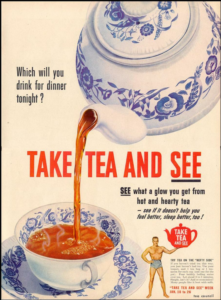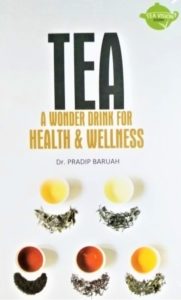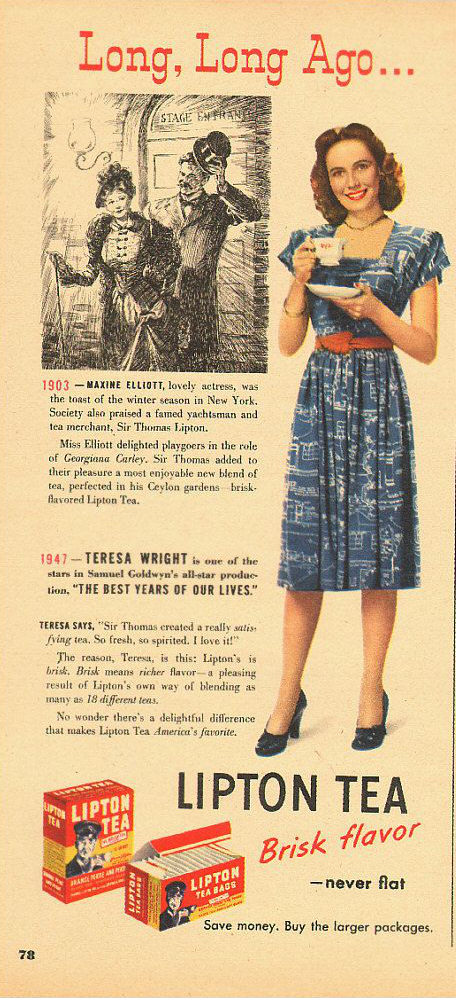Tea’s Immunity Boosting Properties
As the pandemic spreads, conversations on building immunity to the coronavirus are growing; the spotlight has turned to tea and its immunity-bearing antioxidants. Can tea help is a question that is making the rounds.
The “immuni-tea” story, as one local newspaper headline labeled it, describes how a humble brew transformed into a healing blend.
The green tea revolution

That tea is good for health is not news. But marketing tea’s healthy properties is seeing a resurgence. In India, the shift began several years ago when drinking green tea became all the rage. Green tea was widely marketed as a cure for disease, a drink to rid the body of toxins, and an aid in weight loss. Antioxidants, polyphenols, catechins became magical ingredients that brought the promise of wellness. In 2016, green tea saw a 16% growth in sales when marketed as a healthy beverage in a nation of milk tea and spiced chai drinkers. India adopted, no, embraced, green tea even if the drink itself was often brewed to bitterness and not very palatable. Blends were prominent on store shelves. Interestingly, green tea offered something across the board, appealing to both mass market and specialty tea consumers.
The two big retail companies, Tata Consumer Products Ltd. and Hindustan Unilever, led the green tea mass market with Tetley and Lipton, respectively. In 2014, both brands signed young, successful movie stars to market green tea to younger people, who aspired to an active lifestyle and good health. Fortunately, it is not all hype. Six years after it caught mass attention, green tea remains an important segment, whose place in the Indian retail sector has become stronger with the arrival of COVID-19. Ashok Mittal, Managing Director of Bengaluru-based Teamonk says, “The Indian green tea market is projected to grow above 30%. COVID-19 has turned into an opportunity for tea, more so for green and other specialty teas like oolong and white teas. People realize that traditional tea with milk and sugar is not so healthy. Green teas with high concentrations of antioxidants and low caffeine are far more beneficial in building immunity. We see a significant growth in demand for our specialty teas post COVID-19.”
Botanicals and adaptogenic tea

To the ‘goodness’ of green tea is added botanicals such as tulsi or holy basil, moringa, lemon, ginger, and ashwagandha. These ingredients have, for generations, been part of the Indian pantry and used as home remedies. Tea offers the perfect vehicle for these blends, making the beverage more familiar and palatable. Other superfoods like matcha and turmeric are giving rise to many, many combinations of tea blends and tisanes.
Botanicals had already captured the imagination of consumers and blenders alike. Earlier this year, in his trends forecast published in World Tea News, Dan Bolton wrote that “Botanicals that promise specific health benefits are outselling many traditional Camellia sinensis-based teas. Functional and condition-specific blends are popular with young tea drinkers. Every major brand has introduced line extensions, altering their identity. Rishi, for example, is now Rishi Tea & Botanicals, and Bigelow Tea recently introduced a line of cold fusion botanicals. Maria Uspenski, the founder of The Tea Spot, predicts adaptogenic teas that offer overall wellness benefits will do well in 2020.”
Adaptogenic teas are botanical tea blends thought to help the body combat stress. The desire for food and beverage that promote and enhance a sense of well-being and balance had already brought adaptogenic teas into customer consciousness. What the COVID pandemic seems to have done is make them more attractive than they have ever been.
In July this year, Teamonk launched its kadha green tea. Positioned as a natural immunity booster, it’s a blend of green tea with tulsi, ginger, cinnamon, and black pepper. The name is key, as Indian customers recognize kadha as the familiar go-to home remedy. The blend is brewed as a green tea with a 2-minute steep, or like the kadha itself, boiled with water for 3-5 minutes to create a thick decoction. It’s the classic combination of the antioxidant-rich green tea combined with traditionally used health-boosting ingredients prescribed by Ayurveda, the ancient medicine system. Says Mittal, “The tea blend is based on a formula approved by the Ministry of Ayush (that monitors traditional systems of Ayurveda, Yoga, and Naturopathy, Unani, Siddha, and Homoeopathy).” He adds that the response has been encouraging, and they are focusing on more green tea-based variants with ayurvedic and herbal ingredients.
Like Teamonk, there are several Indian tea brands, including Aasmah, Only Leaf, and Tea Treasure, that retail tea blends, with immunity being the main takeaway.
In the Kangra valley, where chinary tea was planted in the mid 19th century, a local university, the Chaudhury Sarwan Kumar Himachal Pradesh Krishi Vishwavidyalaya, that owns 44 hectares of tea garden, recently announced an immune-boosting herbal tea to combat COVID-19. A tea processing unit has been set up there. Four variants, green tea with tulsi, green tea with lemon and honey, orthodox tea with mint, tulsi, and rose, and black tea with rose are in production.
Research on black tea’s antiviral properties

Dr. Pritom Chowdhury of the Tocklai TRA (Tea Research Association) makes a case that the theaflavins in black tea aid in the fight against COVID-19. In a press release, he says, “A recent research report based on a computational study published in the Journal of Medical Virology has found that Theaflavins (TF), a class of antioxidant compounds, found in black tea have the potency to inhibit [replication] of the SARS-coronavirus. Theaflavins target the RNA-dependent RNA polymerase (RdRp), an enzyme which aids virus replication and is considered a major target for new anti-coronavirus drugs. This makes the discovery of theaflavin’s interaction with it a very promising advancement for further drug development research.” He adds that studies have documented antiviral activities of theaflavins against influenza A, calcivirus, herpes simplex virus 1 (HSV-1), and human immunodeficiency virus 1 (HIV-1).
In 2018, Dr Chowdhury of TRA Tocklai along with the University of Lille, Institut Pasteur de Lille, Center for Infection and Immunity of Lille, France published a paper in a peer reviewed journal PLOSone on the role of Theaflavins, polyphenols of black tea, in inhibiting the entry of hepatitis C virus in cell culture.
Recently, Tocklai TRA also published a compilation of research on black tea’s antiviral activity and immune boosting properties. The report consolidates various research on black tea’s pharmacotherapeutic properties. In the context of COVID-19, the report highlights studies that have supported pu-erh and black tea extracts as being more potent than green or oolong extracts.
In south India, the UPASI Tea Research Institute is exploring the antiviral properties of Theaflavins-3, a compound abundantly found in black tea and catechins from green tea for the control of coronavirus in collaboration with Tea Board of India through Indian Council for Medical Research (ICMR). In a statement issued in April 2020, UPASI Chairman C. Sreedharan said, “The amino acid L-Theanine, found almost exclusively in the tea plant, actively alters the brain’s attention. It also helps the body’s immune system in response to the infection of several diseases. There is evidence that black tea is associated with a protective role against cancer, diabetics, cardiovascular diseases, prevention of infections besides detoxifying, stress relief, and anti-inflammatory properties.”
Health in tea marketing

Interestingly enough, in marketing tea, health has always played an important role. In her book Tasting Qualities, Sarah Besky writes that back when the Indian Tea Association (ITA) was promoting “Empire Tea” (teas originating in the colonies), medical journals were linking the increased consumption of these malty, astringent teas from British colonies to a population-wide rise in indigestion and constipation. The public tussle over tannins entwined health from the onset of tea marketing. Those selling Chinese tea provoked doubts about tannins to influence the market against Empire Tea, promoting their own “tannin-less” and “digestive” tea as the remedy. The ITA and allied tea producers began to onboard scientists.
For nearly four decades, from the late 1800s through the 1930s, says Besky, a series of lab experiments were carried out on tea tannins. The ITA kept up its pursuit of scientific backing to support its tea sales. It endorsed a 1911 Lancet study, “The Chemistry, Physiology, and Aesthetics of a Cup of Tea” that concluded a good cup of tea is good because of the balance between caffeine and tannin.
By the end of the 1930s, the marketing itself shifted from disproving tea tannins were the villain. Instead, it began to promote the beneficial aspects of tea drinking, and as it was drunk – with milk and sugar. As for digestive teas, we still have one around from those times, the one that Besky says, “supplanted all others”. It was Brooke Bond’s Pre-Gestee Tea. The name was changed to Pre-Gestee Tips, which was still a mouthful. In time, it became better known as PG Tips.
Says Sarah Besky, “Marketing manufactures both doubt and faith. Think about the faith that the antioxidants in our green tea are a cancer preventative. It has cost the industry and retailers a ton of money to convince consumers of these claims. Granted, they are reaping rewards on the investment, but also consider all of the money that cigarette manufacturers rolled out to convince the public that smoking was totally harmless. To me, it’s all part of the same project. Comestibles and narratives about consumer health and well-being go hand in hand in late capitalism. ‘Is this good for me?’ and ‘How bad is this, really?’ are questions that animate much of bourgeois consumption. The flip side is always that markets can be manipulated.”
From caffeine and tannin to antioxidants, catechins and polyphenols, the chemistry of tea continues to be prodded for more proof. It has not yet yielded conclusive evidence of every claim for the betterment of human health. The conversation continues. It will be interesting to look back at this great pandemic to see its influence on tea culture, its effect on marketing tea, and how we consume and enjoy it.
Tea Market
Get More Value from Your Tea: BRU Maker One
+41794574278
Jacque's Organics
(647) 804-7263
I find I can buy these ingredients in bulk and make my own blends. Usually in the pot I am brewing. It is exciting and fun to see what you can come up with that both tastes good and is healthy!
My two basic blends are an herbal with red raspberry leaf, echinacea, mint, anise, and orange oil, or a green tea, black tea, mint, anise, and lemon or bergamot oil. My Hibiscus blend: Hibiscus, Elderberry, and Rose Hips. To these I add and subtract items to customise!
Thanks for the great article. I have been waiting for such showing the value against viruses.
Seems so obvious! Especially the value of BLACK tea. There is so much published research on the valuable anti-oxidants – and black has about 80% as much as green. Yet we always emphasize green which will NEVER rival black in acceptance. Strong black tea drunk regularly will always far surpass value of green. The industry needs to be more active at this time! Lets have more stimulating articles.
Very comprehensive article based on present need. Elated with Tocklai connection.